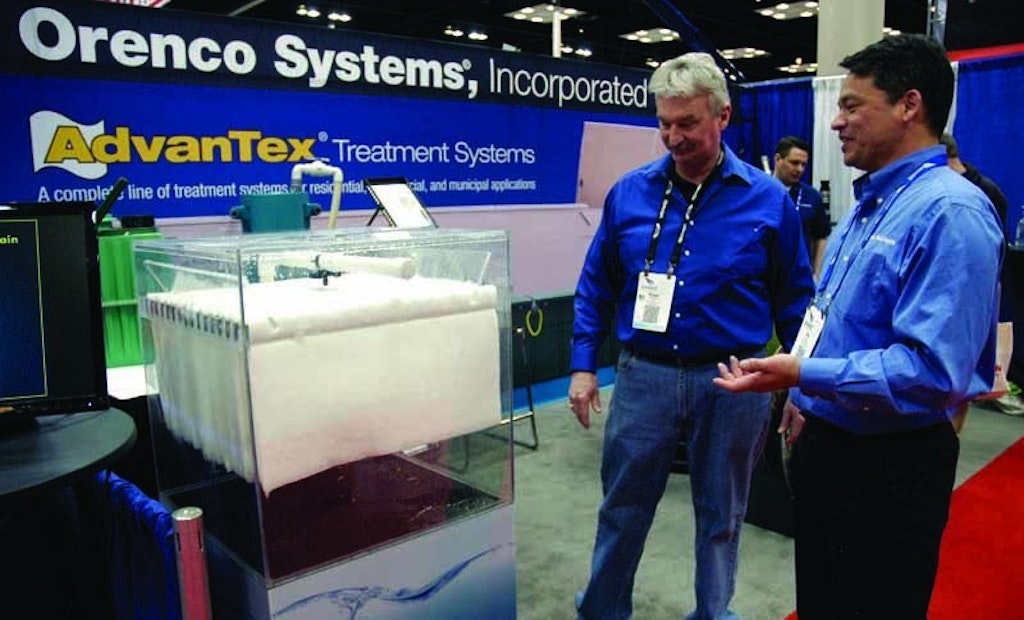
Interested in Systems/ATUs?
Get Systems/ATUs articles, news and videos right in your inbox! Sign up now.
Systems/ATUs + Get AlertsOften an onsite treatment system challenge requires a custom, one-of-a-kind installation. Those situations aren’t always cost-effective, though. To answer that problem, Orenco Systems has developed a premanufactured, modular treatment system that not only fits into a tight footprint, but also provides treatment for a large variety of flows and waste strengths – the AdvanTex Treatment System.
The system, highlighted in the Orenco Systems booth at the 2015 Water & Wastewater Equipment, Treatment & Transport (WWETT) Show, uses an engineered textile media to treat wastewater and meet stringent regulatory requirements. The filter is configured similar to a recirculating sand filter – a packed-bed filter technology Orenco engineers have worked with for nearly 40 years. The media is microdosed at regular intervals by low-flow pumps, with spin nozzles distributing the effluent evenly to optimize treatment. Systems are geared toward customers with homes along rivers, lakes, beaches and bays that have a high water table, making passing percolation tests for conventional septic systems difficult.
In the AdvanTex system, the textile media isn’t submerged. “The media actually hangs above the liquid level. We believe that the atmospheric contact helps transfer oxygen more efficiently,” says Bob Smith, a sales engineer with Orenco Systems.
AdvanTex Treatment Systems can provide treatment quality at loading rates as high as 25 to 50 gpd per square foot, allowing them to serve projects with severe space constraints, according to Smith. The clear, odorless effluent can be reused in applications such as irrigation. The process reduces nitrogen significantly, and special configurations can reduce nitrogen even further to meet stringent limits, he says.
“Homes that sit close to bodies of water need to have systems that severely limit the amount of nitrogen released in the effluent,” says Smith. “AdvanTex systems have a low biological oxygen demand and typically reduce nitrogen levels 60 to 70 percent.”
The modular layout of an AdvanTex system lets a designer add more pods for later phases of an expanding project, meaning there’s no need to oversize the treatment system during initial installation, Smith explains. Mobile AdvanTex units are available for remote locations or temporary/emergency situations, such as disaster relief or military operations. A larger version of the technology, AX-MAX, can be used in higher flow configurations up to 1 mgd, making it a fit for small communities or housing developments outside a municipal sewer system service area.
“This is really a technology we feel fits a lot of different scenarios and problem areas,” says Smith. “It’s a modular, proven technology that we continue to find different fits for.”
Smith says he was enthused by the positive reception Orenco received at the WWETT Show. The company’s goal coming into the week was to let attendees know how many applications the AdvanTex system is a fit for.
“AdvanTex has been out on the market awhile, and the technology is very well-known in the industry,” he says. “We are here letting people know that we have many different versions of the technology now that fit across many different levels of service. If you have a treatment problem, we feel we have a solution.” 800/348-9843; www.orenco.com.





